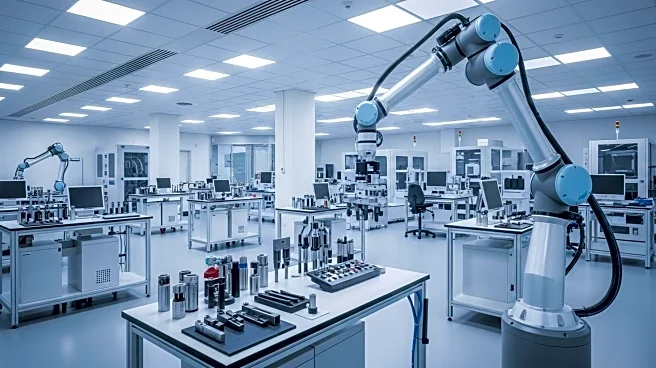What's Happening?
Raritan Valley Community College (RVCC) has officially opened its expanded Workforce Training Center (WTC) following a ceremony held on September 16. The expansion, which cost $9.8 million, was funded by the State of New Jersey, Somerset County, and Hunterdon County. The project increases the facility's size by 50%, bringing it to a total of 65,700 square feet. This expansion allows RVCC to offer experiential learning in fields such as biomanufacturing, electric vehicle technology, mechatronics, robotics, and welding. The initiative aims to bridge the gap between education and industry by providing students with hands-on training and creating a skilled workforce pipeline. RVCC President Michael J. McDonough emphasized the importance of the college's public-private partnerships in ensuring that students are well-prepared for emerging workforce demands.
Why It's Important?
The expansion of RVCC's Workforce Training Center is significant as it addresses the growing demand for skilled labor in rapidly evolving industries. By offering training in cutting-edge fields like electric vehicle technology and biomanufacturing, the college is positioning itself as a key player in workforce development. This initiative not only benefits students by enhancing their employability but also supports local and regional employers by supplying a pipeline of well-trained professionals. The investment reflects a broader trend of educational institutions collaborating with industry to meet labor market needs, which is crucial for economic growth and competitiveness.
What's Next?
With the expanded facilities now operational, RVCC is expected to attract more students interested in pursuing careers in high-demand sectors. The college will likely continue to strengthen its partnerships with industry leaders to ensure that its programs remain relevant and aligned with workforce needs. Additionally, the success of this expansion could serve as a model for other educational institutions seeking to enhance their workforce training capabilities. Stakeholders, including state and local officials, will be monitoring the impact of the expansion on job placement rates and industry satisfaction.











